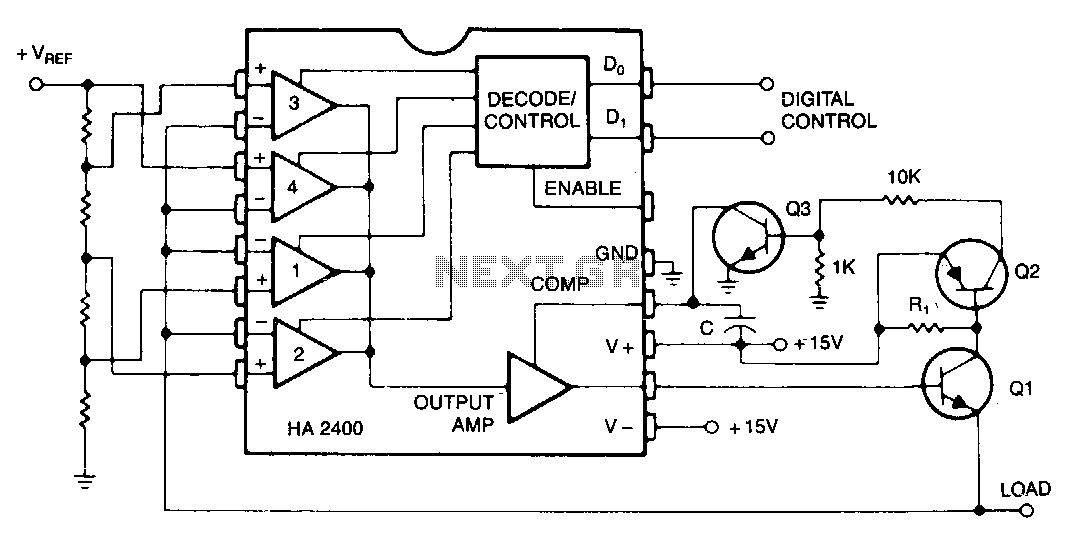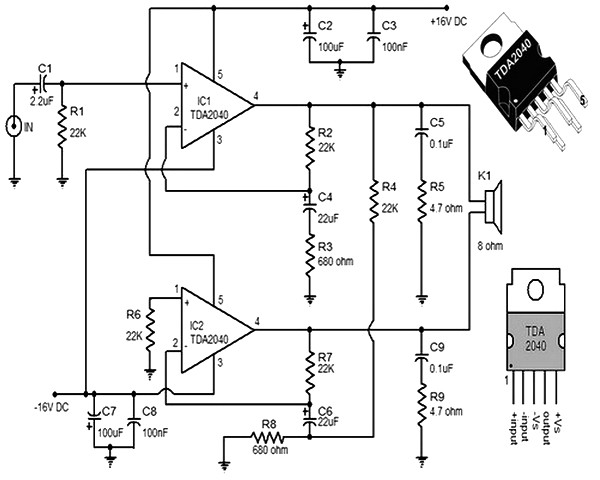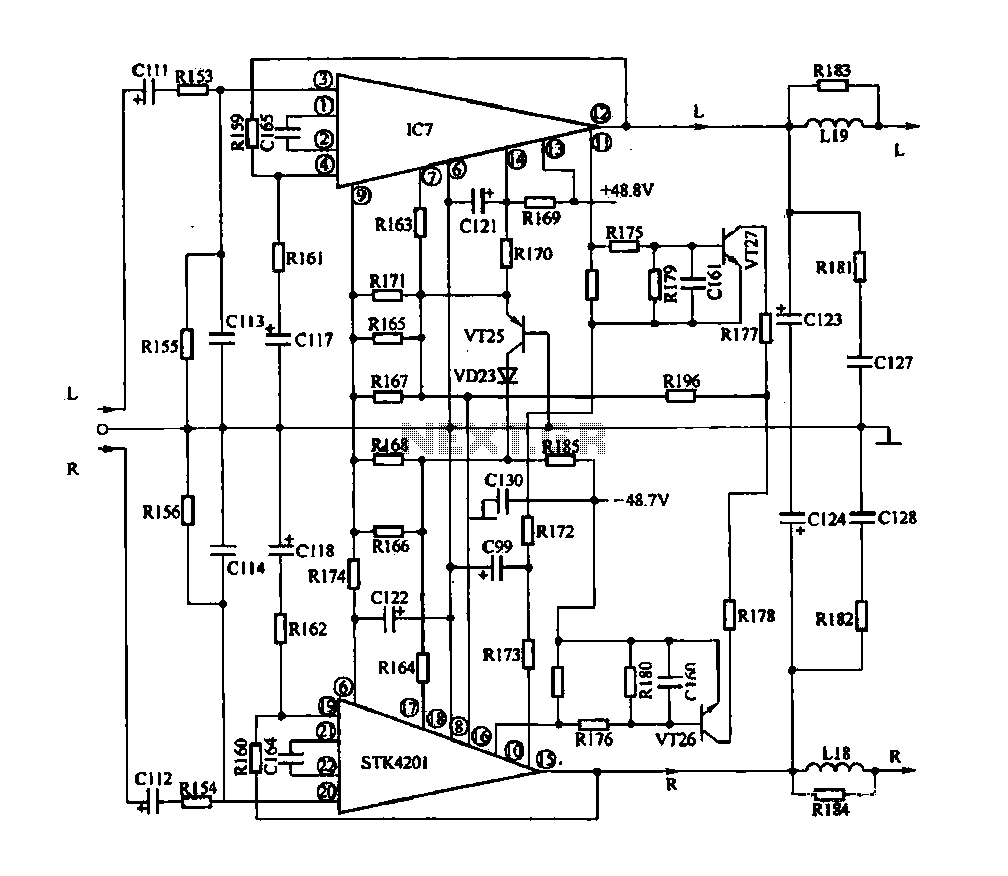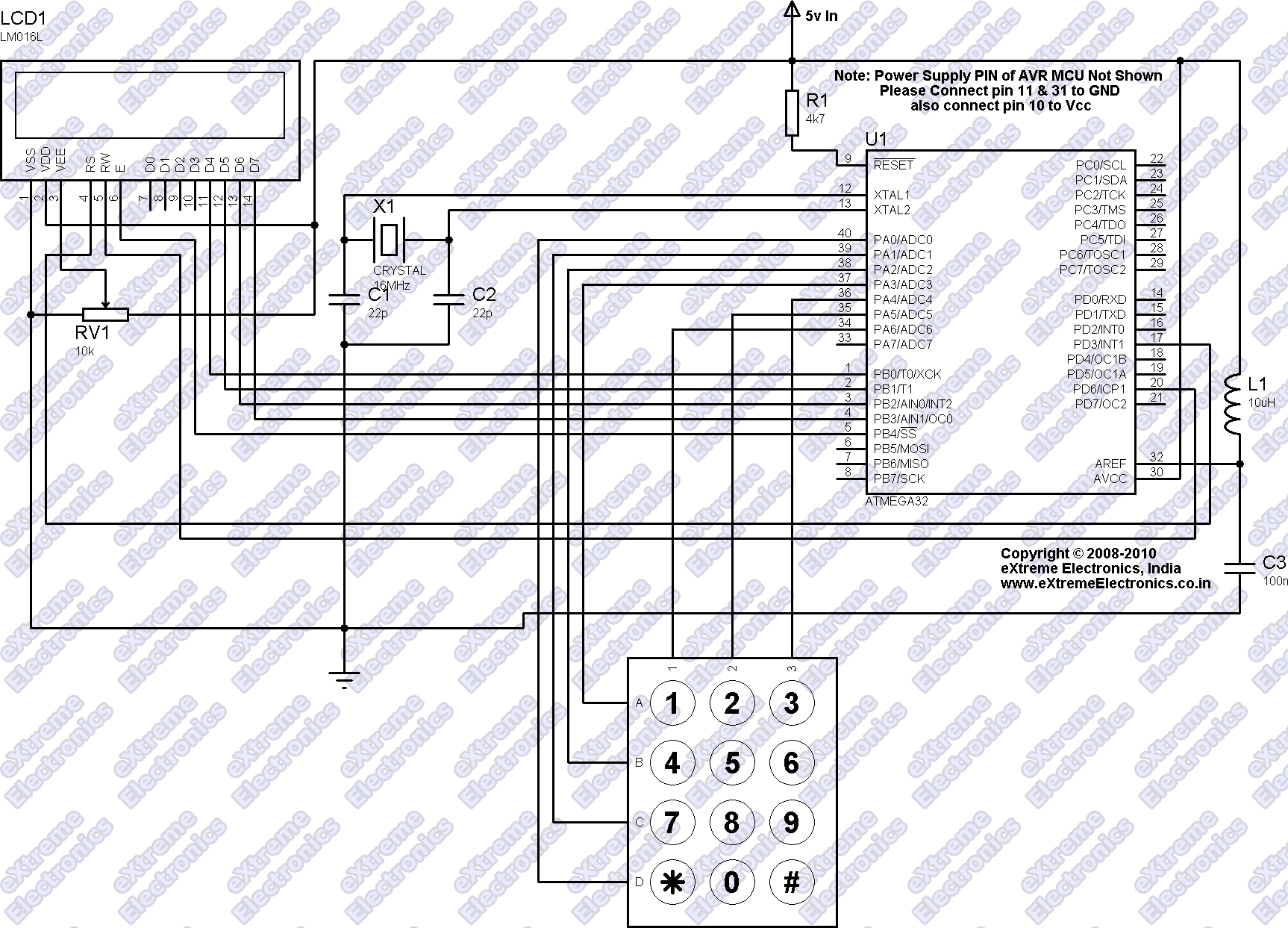
Brightness controller for low power lamps
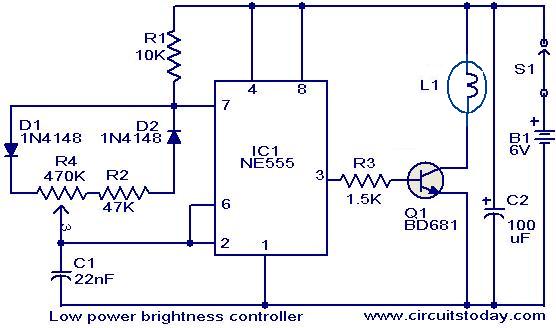
The circuit presented here is designed to control the brightness of low-power incandescent lamps. It utilizes the NE555 integrated circuit, configured as an astable multivibrator with a variable duty cycle. The output from the IC is connected to the base of transistor Q1, which drives the lamp. The duty cycle of the multivibrator can be adjusted by changing the position of potentiometer R4. Consequently, the brightness of the lamp varies in accordance with the setting of potentiometer R4. This circuit can also be adapted for speed control of small DC motors.
The circuit employs the NE555 timer IC, which is a versatile component widely used in various applications. In this configuration, the NE555 operates as an astable multivibrator, generating a continuous square wave output. This output toggles between high and low states, with the duty cycle determining the proportion of time the output remains high. By adjusting the resistance of potentiometer R4, the duty cycle can be varied, which in turn modulates the average voltage applied to the load, resulting in a change in brightness for the incandescent lamp.
Transistor Q1 acts as a switch that controls the current flowing through the lamp. When the output of the NE555 is high, Q1 is turned on, allowing current to flow through the lamp, thus illuminating it. Conversely, when the output is low, Q1 turns off, cutting off the current and extinguishing the lamp. The effective brightness is directly proportional to the duty cycle; a higher duty cycle results in a brighter lamp, while a lower duty cycle leads to dimmer illumination.
This circuit's design can be easily adapted for other applications, such as controlling the speed of small DC motors. In this case, the same principles apply, where the average voltage delivered to the motor is controlled by adjusting the duty cycle of the NE555 output. By varying the duty cycle, the motor speed can be finely tuned, providing a practical solution for applications requiring speed control. Overall, this circuit exemplifies a straightforward yet effective method for managing the brightness of lamps and the speed of motors using minimal components.The circuit given here can be used to control the brightness of low power incandescent lamps. The circuit is based on IC NE555 which is wired as an astable multivibrator with variable duty cycle. The output of IC is connected to the base of transistor Q1. The Q1 drives the lamp. The duty cycle of the multivibrator can be varied by varying the POT R 4. As a result, the brightness of the lamp varies according to the position of the POT R4. The same circuit can be also used for speed control of small DC motors. 🔗 External reference
The circuit employs the NE555 timer IC, which is a versatile component widely used in various applications. In this configuration, the NE555 operates as an astable multivibrator, generating a continuous square wave output. This output toggles between high and low states, with the duty cycle determining the proportion of time the output remains high. By adjusting the resistance of potentiometer R4, the duty cycle can be varied, which in turn modulates the average voltage applied to the load, resulting in a change in brightness for the incandescent lamp.
Transistor Q1 acts as a switch that controls the current flowing through the lamp. When the output of the NE555 is high, Q1 is turned on, allowing current to flow through the lamp, thus illuminating it. Conversely, when the output is low, Q1 turns off, cutting off the current and extinguishing the lamp. The effective brightness is directly proportional to the duty cycle; a higher duty cycle results in a brighter lamp, while a lower duty cycle leads to dimmer illumination.
This circuit's design can be easily adapted for other applications, such as controlling the speed of small DC motors. In this case, the same principles apply, where the average voltage delivered to the motor is controlled by adjusting the duty cycle of the NE555 output. By varying the duty cycle, the motor speed can be finely tuned, providing a practical solution for applications requiring speed control. Overall, this circuit exemplifies a straightforward yet effective method for managing the brightness of lamps and the speed of motors using minimal components.The circuit given here can be used to control the brightness of low power incandescent lamps. The circuit is based on IC NE555 which is wired as an astable multivibrator with variable duty cycle. The output of IC is connected to the base of transistor Q1. The Q1 drives the lamp. The duty cycle of the multivibrator can be varied by varying the POT R 4. As a result, the brightness of the lamp varies according to the position of the POT R4. The same circuit can be also used for speed control of small DC motors. 🔗 External reference
